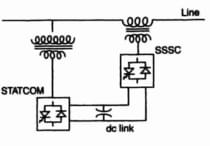 |
| Digital Electronics MCQs |
1. EPROM contents can be erased by exposing it to______.
a. Infrared rays
b. Ultraviolet rays
c. Intense heat radiations
d. Burst of microwaves
2. Which of the following memory is volatile?
a. RAM
b. PROM
c. EPROM
d. ROM
3. The access time of ROM using bipolar transitions is about______.
a. 1 sec
b. 1 nsec
c. 1 μsec
d. 1 msec
4. In a RAM, information can be stored_______.
a. By the manufacturer, only once
b. By the user, number of times
c. By the manufacturer, number of times
d. By the user, only once
5. The process of entering data into a ROM is called______.
a. Burning in the ROM
b. Programming the ROM
c. Charging the ROM
d. None of the above
6. How many address bits are required to represent a 32 k memory?
a. 14 bits
b. 12 bits
c. 16 bits
d. 10 bits
7. Which of the following memory require refreshing?
a. SRAM
b. DRAM
c. EPROM
d. ROM
8. Which of the following memory system can not be accessed randomly?
a. Magnetic tape
b. DRAM
c. EPROM
d. ROM
9. The information in ROM is stored______.
a. By the user once and only once
b. By the user any number of times
c. By the user using the ultraviolet rays
d. By the manufacturer during fabrication of the device
10. In a virtual memory system, the address used by the programmer belongs to_______.
a. Physical address
b. Memory space
c. Main memory address
d. Address space
11. A circuit in which connections to both AND and OR arrays can be programmed is called______.
a. PAL
b. RAM
c. ROM
d. PLA
12. Dynamic RAM consumes _____ power and is____ than the static RAM.
a. less, slower
b. less, faster
c. more, faster
d. more, slower
13. Cache memory works on the principle of______.
a. Locality of reference and memory
b. Locality of data
c. Locality of reference
d. Locality of memory
14. Memory interfacing technique is used to address the memory modules in order to have_____.
a. Reduced complexity in mapping hardware
b. Higher average utilization
c. Faster access to a block of data
d. Both (b) and (c)
15. When a ROM is designed to convert a binary word to a Gray code, the number of input bits to the ROM is____ the number of output bits of the ROM.
a. Not related to
b. Less than
c. Equal to
d. Greater than
16. Which of the following memories stores the most number of bits?
a. A 5 M x 8 memory
b. A 1 M x 16 memory
c. A 1 M x 12 memory
d. A 5 M x 4 memory
17. The total capacity of a ROM with 1024 rows and 4 columns is______.
a. 512
b. 256
c. 1024
d. 4096
18. The number of bits required to address a 4 k memory is_______.
a. 14
b. 13
c. 12
d. 11







0 Comments
If you have any doubt, feel free to ask.